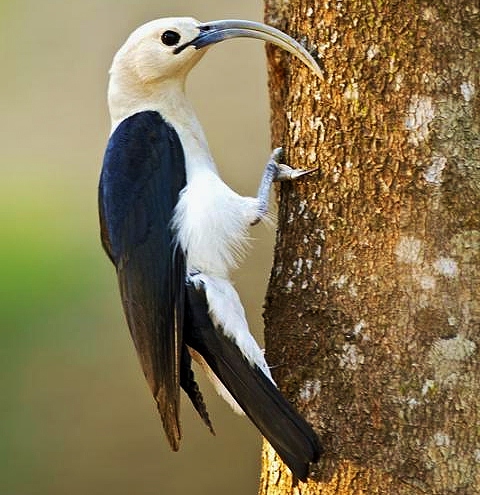 |
| Photo by Dubi Shapiro (Internet Bird Collection) |
Common name:
sickle-billed vanga (en); vanga-de-bico-curvo (pt); falculie mantelée (fr); vanga piquicurvo (es); sichelschnabelvanga (de)
Taxonomy:
Order Passeriformes
Family Vangidae
Range:
This species is endemic to Madagascar, being found on the western side of the island.
Size:
These birds are 32 cm long and weigh 100-120 g.
Habitat:
The sickle-billed vanga is mostly found in dry tropical forests and scrublands, dry savannas and to a lesser extent in tropical moist forests and mangroves. They are found from sea level up to an altitude of 900 m.
Diet:
These birds often forage in groups, using their long bills to probe the bark of the trees for various invertebrates, such as spiders, cockroaches, crickets, beetles, and worms, but also small vertebrates such as chameleons and geckos.
Breeding:
Sickle-billed vangas breed in October-January. They are polyandrous, with each female matting with several males who are responsible for raising the chicks. The female performs courtship displays to attract the males. The nest is built by both sexes, consisting of a large untidy bowl of twigs, placed in a fork in a tree 9-16 m above the ground. There the female lays 3-4 creamy eggs with dark mottles, which are incubated by both sexes for 16-18 days. The males are mostly responsible for feeding and brooding the chicks, which fledge 19-23 days after hatching.
Conservation:
IUCN status – LC (Least Concern)
This species has a large breeding range and is described as common in areas of favourable habitat. There is no information regarding population trends, but the sickle-billed vanga is not considered threatened at present.







